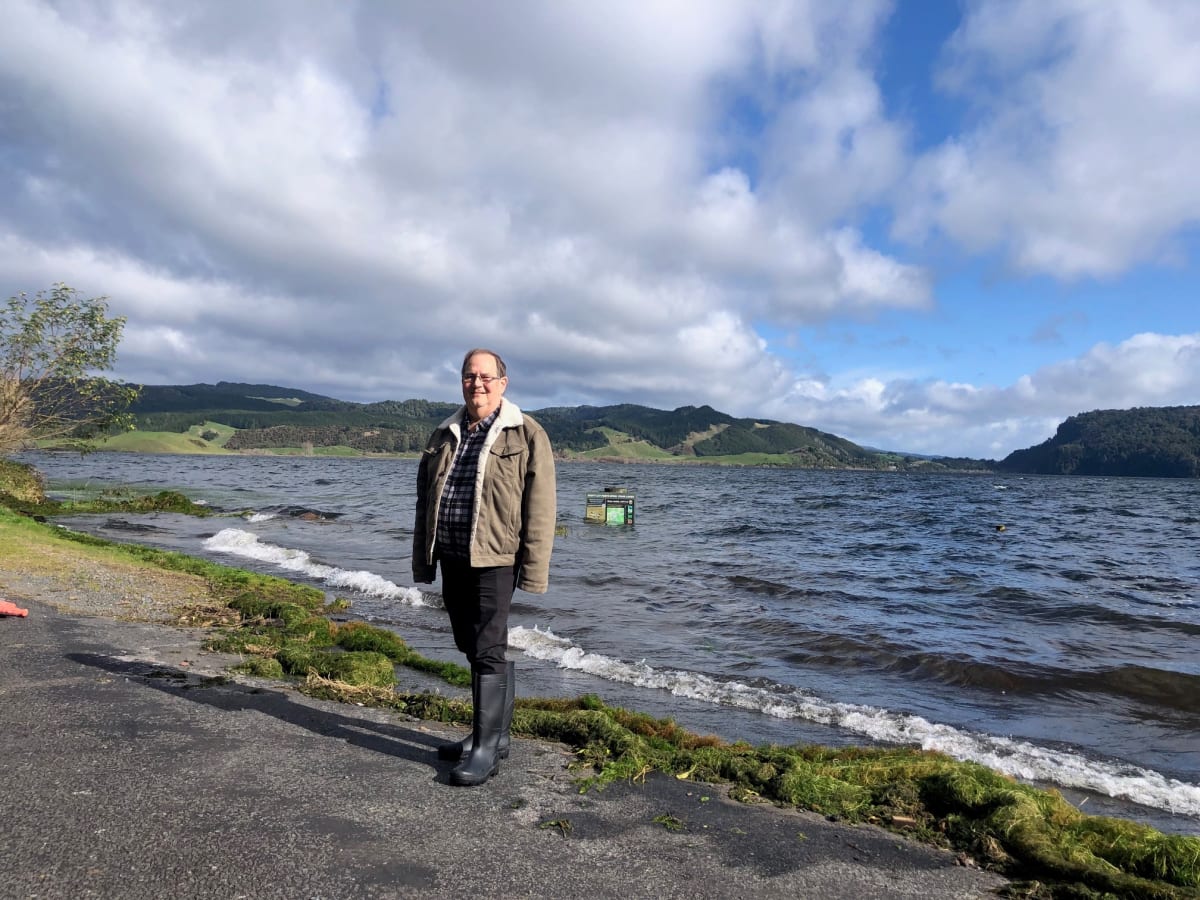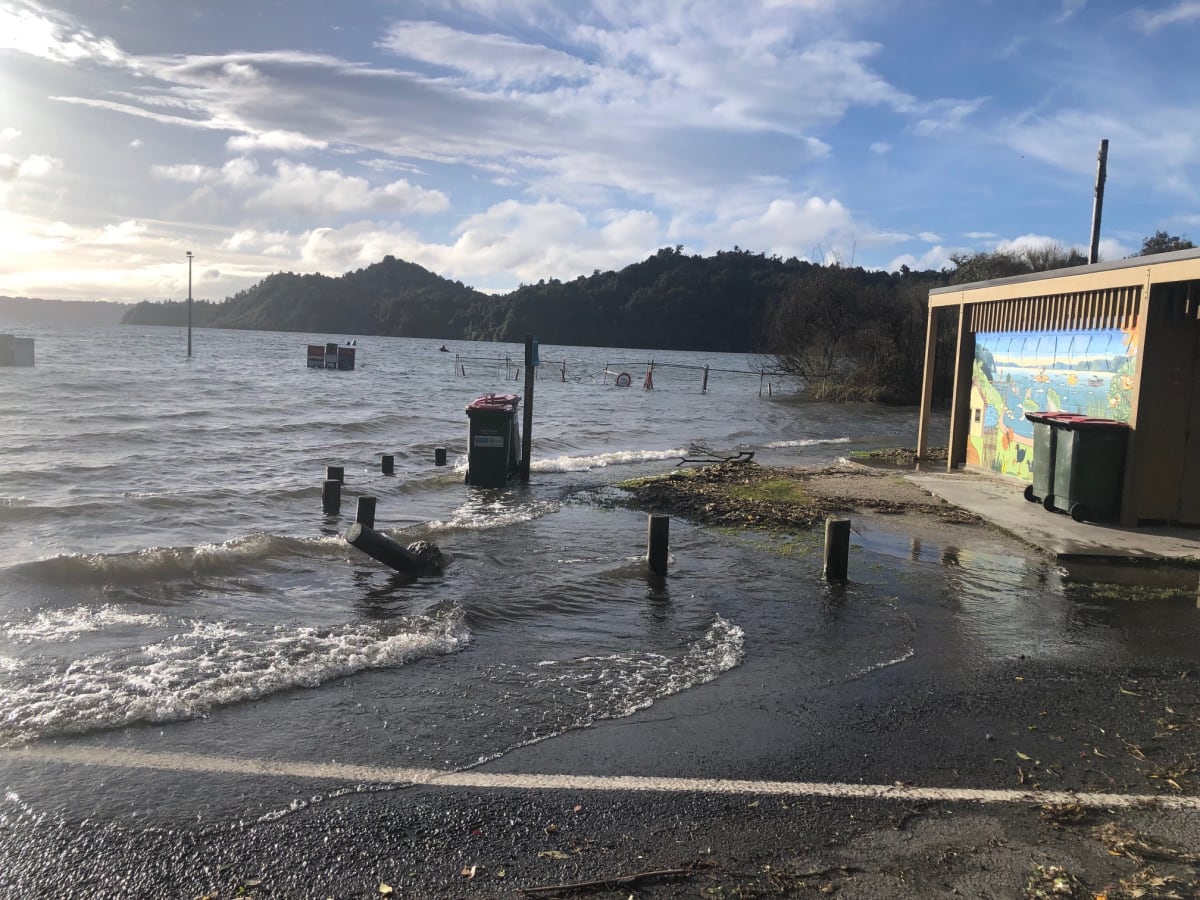
For many who own property around the lakes near Rotorua, it was a dream to live so close to the water's edge. But now, instead of the lake lapping at their doorsteps, it's in their houses.
The roof of a child's playhouse and the top of a set of swings poke out of the flooded Lake Rotoma, the only visible signs of a playground in the bay.
The sight shocks Phill Thomass, chair of the Rotorua Lakes Community Board.
Just metres away, water laps at the doors of the public toilets, while the beach, carpark and camping spot are all submerged.
"I can't believe how much higher this is than when I was here three weeks ago," he says.

It's a similar scene at many of the bays around Rotorua's lakes, in the central North Island.
"It's a slow-moving disaster," says Thomass who, along with hundreds of residents and holiday home owners in the dozens of settlements scattered around the lakes, has been watching the water creep higher over the past 18 months.
"It started in January," says Adrian Holmes, standing on the balcony of his two-storey holiday home at Rotoehu's Ōtautū Bay.
"The house started flooding downstairs due to groundwater, not lake water, it was just pure saturation of the land and the water was coming up through every crack it could find in the concrete.
"Now we're facing the lake coming into the house, as well as the groundwater, so this is a new problem and the lake brings a lot of rubbish with it."
Holmes bought the place two years ago because he and his family wanted to be lakeside.
"Now we're in it," he says. Like other property owners, he's moved everything off ground level and expects power to the house to be cut off by floodwaters any day.
Forecasters say a changing weather pattern should bring less rain, but that doesn't ease residents' fears that lake levels will keep rising – not only threatening homes, but the main link between Rotorua and Whakatāne, State Highway 30.
At neighbouring Kennedy Bay, Julie Riggir is one of a handful of permanent residents who have been cut off from their community, because the road that connects them with SH30 is flooded. A five-minute drive to the shops, school, social gatherings at the local hall can now take an hour. It means children in the settlement don't go to school, workers' 20-minute commutes now take up to two hours, and the road could stay closed for months, she says.

It has also separated the settlements from easy access to emergency services.
Holmes points out that Lake Rotoehu and neighbouring Rotomā have no outflow and the sodden surrounding land is also seeping. Rotomā's levels need to rise another 500mm before they overflow into Rotoehu. It sounds a lot, he says, but the lakes have already reached or broken through levels not seen since 1971's record flooding. If Rotomā does overflow, Rotoehu's catchment will double, pushing the level up by more than a metre.
"That's a game changer for a lot of houses in here. A lot more of them will get flooded."
The water will subside, says Holmes, but it has left many residents worrying about future floods, whether they will have to leave their properties for good, or shift their homes to higher ground. And with no natural outlet, there is no easy answer.
"Neither of the lakes are managed by anything apart from Mother Nature," he says.
"Long term, if they can work out some sort of way to control the level of the lake, that is the ultimate answer for us. They can pump water. Can an overflow reservoir be built anywhere? Otherwise can we get it into a stream and out to the coast but of course when it's at this level everyone's hurting and so is the coastline?"

Meanwhile, Waka Kotahi is working closely with both the Whakatāne District Council and Rotorua Lakes District councils to monitor and manage the impact of flooding on SH30.
The agency says short-term resilience improvements are underway.
Hear more about the impact of the flooding from the lakes in the full podcast episode.
Check out how to listen to and follow The Detail here.
You can also stay up-to-date by liking us on Facebook or following us on Twitter.







